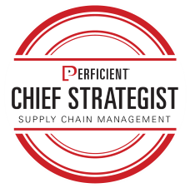Previously, I highlighted the benefits of sustainability in a business’ supply chain. This installment outlines the opportunities companies can take to implement sustainability protocols.
When building a roadmap for the supply chain organization, leadership can look at sustainability in two ways: by considering the impact of each operational component in the supply chain separately, or holistically viewing supply chain sustainability as a standalone component. Either approach can yield the desired results, depending on the participation of leadership.
The following blog installments examine the seven most beneficial areas to review in order to identify processes and standards where opportunities exist to make sustainability a priority:
- Planning/S&OP
- Process optimization
- Procurement
- Product lifecycle management
- Reverse logistics
- Consumer communications
- Facility operating costs
This blog examines planning/S&OP and process optimization.
Planning/S&OP
With accurate planning, the environmental impact of the supply chain can be greatly minimized. Basic economics dictate balancing supply and demand, so it is critical to examine the costs associated with excess supply. Companies should examine the carrying cost of idle product in warehouses, extra packaging, the cost of product movement, and increased recycling and disposition costs when the surplus becomes obsolete. Accurate planning makes financial sense for any company, and reducing environmental costs of procurement, storage, and disposition go hand in hand with it.
A major clothing manufacturer felt the pain of inaccurate planning when it incinerated an estimated $37 million in clothing and cosmetics to protect its “brand value.” While the environmental and social impact of destroying its excess inventory was serious, in addition to the impact to the company’s bottom line.
Process Optimization
Optimizing processes is core to what most supply chain organizations strive to achieve. How can one continue to procure, produce, and deliver at the lowest cost possible? Supply chain groups have adopted Lean and Six Sigma practices to identify and implement these improvements.
Process optimization programs frequently focus on cost reduction. Looking at the process from a sustainability perspective is a new angle to search for improvement opportunities, or at least a way of implementing the required changes at the lowest cost possible.
One example relates to packaging. Nearly every consumer household has experienced excess product packaging. Cardboard, paper, clam shells, and other packaging materials make up a large portion of every home’s trash and account for one-third of all trash. Globally, businesses are working to reduce these materials while maintaining product integrity and preventing opportunities to shrink. In a recent “Packaging Digest” survey, 86% of brand owners cited having “either goals or statements of support that address one or more concepts in sustainable packaging.”
To learn more about developing and implementing a sustainability program into your business, you can download our guide here. Or, you can download the guide below.

